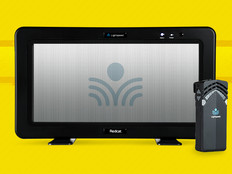Data Shows a Growing Focus on Creativity in K–12 Education
According to a study by Adobe Education, 76 percent of Generation Z students and 75 percent of teachers wish there was a greater focus on creativity in their classes. Educational priorities have evolved, and today’s lesson plans focus more on interactive tools and less on memorization.
When comparing the perceptions of Gen Z students and Gen Z educators, the Adobe study found that both groups consider technology a defining characteristic of their generation and that both believe creativity will play a defining role in their future success. The study also indicates a demand and a need for courses that focus on digital art and creativity in the classroom — and that technology is the most fitting instrument for change.
DISCOVER: Learn how the remote learning pivot sparked innovation in education.
Tech Tools Boost Creativity in the Classroom
With the right approach, technology can not only prove compatible with art education, it can enhance it. Teachers can re-create in-person field trip experiences with the virtual resources from Penn State University’s Palmer Museum of Art or travel through notable moments in art history with the Metropolitan Museum of Art’s interactive “time machine.” Still, one of the most important elements of art education is the focus on creativity. It is crucial, experts say, to empower students to express themselves and create their own works of art, whether through digital tools or traditional mediums like paint or charcoal.
“Creativity is really important for students because it gives them an outlet for expressing their ideas and putting a personal touch on their understanding of concepts,” says educator Jeff Larson in an Adobe video case study. Larson is a former animation instructor at Balboa High School in San Francisco.
Like other schools around the nation, Balboa High School has used digital tools and online resources to optimize student creativity in the classroom. Students there use Adobe Creative Cloud to create multimedia content and explore their imaginations. Roanoke, Va.’s Cave Spring Middle School is another example of successful implementation of digital art resources. In 2018, students there began using Adobe Spark to strengthen critical thinking skills and stimulate creativity in the classroom.
With the shift to hybrid and distance learning models, these digital tools have become increasingly prevalent throughout art education. Most notably, teachers have used videoconferencing software, like Zoom and Google Classroom, to supplement in-person art instruction.
To make of the most of your virtual classroom, it’s critical to make sure you have the right equipment and setup. Many smartphones and tablets offer HD cameras that are suitable in quality for art classrooms. Incorporating tripods can also help ensure better visual quality for instruction.










